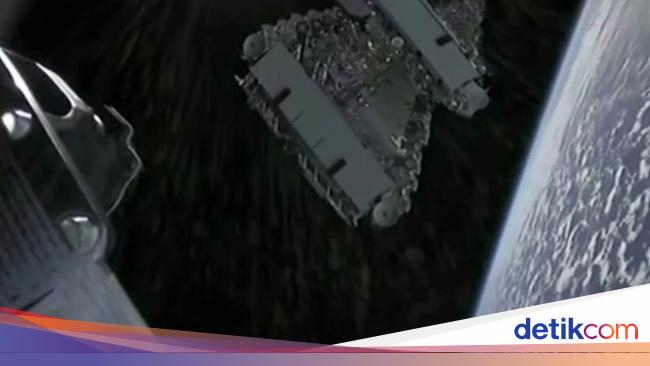Jakarta –
Starlink, satellite internet SpaceX belongs to Elon Musk became one of the new technologies that have attracted attention in recent years. But the technology that promises a fast internet to envelop the Earth threatens space exploration.
Researchers and astronomers say that while this service has the potential to revolutionize broadband access around the world, its methodology, application, and impact on the night sky are alarming and have long-term consequences.
Light pollution
University of Michigan astrophysicist at the University of Michigan in Ann Arbor, Patrick Seitzer, said the Starlink satellite is brighter than 99% of all objects currently in Earth orbit.
“Astronomers can overcome the total satellites that Starlink originally projected about 1,500 satellites. But SpaceX’s plans to launch more than 42,000 satellites into space could seriously hamper astronomers’ efforts to ward off light pollution,” Seitzer said as quoted by ScienceNews.
Besides Starlink, competitors such as Jeff Bezos’ Blue Origin Project Kuiper and the UK’s OneWeb Satellite Constellation are also preparing to launch fleets. satellite internet on their own in the near future.
“It’s no exaggeration to imagine that hundreds of thousands of new satellites will take off in the next decade, because of the huge potential profits in the satellite broadband race,” said Seitzer.
Although SpaceX has launched the “DarkSat” satellite which is claimed to reduce light pollution since early 2020, a study reported by New Atlas says that the overall brightness level reduction is only about 50%.
Reducing the brightness level is considered a step in the right direction, but has too little effect in overcoming the light pollution problem posed by the Starlink satellites. Other efforts to reduce light pollution from satellites include incorporating anti-reflective sunscreen technology to minimize reflectivity considerably in order to be more effective than what DarkSat did.
“There is a little relief that, yes, SpaceX managed to make Starlink less bright. But that doesn’t eliminate the need for a more regulated, global approach to regulation, “commented Harvard University astronomer Jonathan McDowell.
Can collide
Number of satellites Starlink many of which also pose a potential threat from chain reactions of satellites colliding with each other, sending thousands of massive chunks of extraterrestrial trash and debris orbiting around Earth.
Too much debris in space can pose a threat to spacecraft and new satellite launches, making space exploration impossible.
“The worst case is, we launch all the satellites. When they are no longer in use, all the satellites stay there. So we have thousands of new satellites with no plans to get rid of the old ones from there,” said Stijn Lemmens of European space agency ESA.
Lack of space-related regulations will be difficult to prevent companies like SpaceX or Blue Origin polluted the solar system unilaterally. And while the benefits of internet access to remote areas are appealing, the race fills space with satellite internet can make humans lose the beauty of the dark sky in the future.
“If we let Silicon Valley (technology) disrupt the night sky, we’ll never get it back,” said Washington Post writer Shannon Stirone.
Watch Video “Elon Musk’s Ambition Puts the Internet on Mars“
[Gambas:Video 20detik]
(rns/rns)
– .


